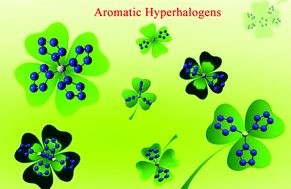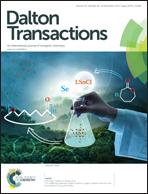Theoretical characterization of a series of N5-based aromatic hyperhalogen anions†
Abstract
Hyperhalogens are a class of highly electronegative molecules whose electron affinities even exceed those of their superhalogen ligands. Such species can serve as new oxidizing agents, biocatalysts, and building blocks of unusual salts, and hence are important to the chemical industry. Utilizing stable N5− as the ligand, a series of aromatic hyperhalogen anions, namely mononuclear M(N5)k+1− (M = Li, Be, B) and dinuclear M2(N5)2k+1− (M = Li, Be), have been reported here for the first time. Calculation results based on the density functional theory revealed that all the N5− subunits preserve their structural and electronic integrity as well as aromatic characteristics in these anions. Especially, these anionic molecules exhibit larger vertical electron detachment energies (6.76–7.86 eV) than that of the superhalogen ligand N5−, confirming their hyperhalogen nature. The stability of these studied anions is guaranteed by their large HOMO–LUMO gaps, and positive dissociation energies of predetermined fragmentation pathways. We hope this work will not only provide evidence of a new type of hyperhalogen molecule but also stimulate more research interest and efforts in the amazing superatom realm.


 Please wait while we load your content...
Please wait while we load your content...